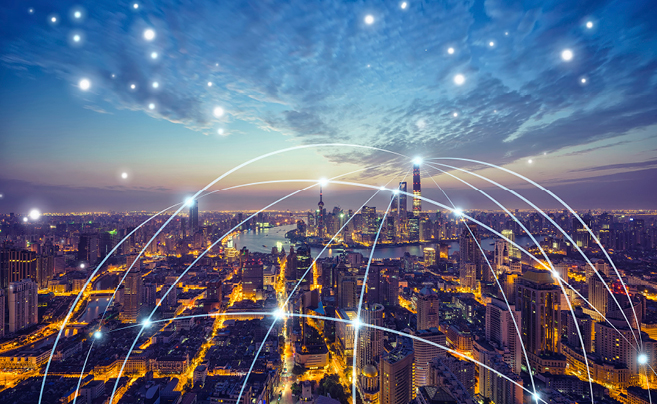Undoubtedly, the exponential rate of urbanisation in big cities in Australia is placing significant strain on communities to provide services and hubs for engagement and interaction. More than two thirds of Australia’s population live in big cities[1], while the nation’s average annual population growth of approximately 1.4 per cent is substantially higher than the Organisation for Economic Co-operation and Development (OECD) average of approximately 0.5 per cent[2].
Yet in the digital age, the notion of these hubs — as purely physical entities — whose sole function is to offer a public space where people can gather to discuss and share information has vastly transformed. Today there are a multitude of spaces, transcending geographical bounds that inform civics, politics, and culture within a community. Cultural exchanges and information can be shared and shaped by the neighbourhood space, as well as through technology and the media, be it via online forums and groups, social media, books, magazines, newspapers, television, music or films.
If the recent launch of the Pokémon GO app proves anything — it’s that technology and interactive technologies in particular have the potential to bring people together across vast outdoor and virtual spaces, merging the digital and physical worlds. The app’s mapping technology has been able to create hot spots around city spaces enabling users to congregate in parks and other locations to play the app, giving them the chance to explore areas that they may have never visited before. According to a recent article in Architecture AU, “Pokémon GO challenges urbanists to reframe public space in ways that address its potential for augmented experiences…[and] also demonstrates how interest in a public space may be stoked by augmenting it with virtual content.[3]”
Certainly, for both businesses and governments, location-based apps such as Pokémon GO offer vast opportunities to engage with stakeholders on a ‘phygital’ level as the technology offers a way of mapping how many people are using public places and for how long. This is an opportunity for businesses and governments to collect and analyse this data in order to create public space designs that will ensure maximum foot traffic and interaction. Phygital is a marketing term used to describe the combination of physical and digital worlds. The idea is that the physical experience is blurred with the digital where organisations offer ‘smart’ facilities for customer interaction.
While retailers have traditionally been the first adopters in this arena, increasingly government organisations are realising the benefits of offering spaces for citizens that allow them to engage on multiple levels, including digital. Fairfield City Council, in Sydney’s western suburbs, is one example of a council space designed to maximise both physical and digital spaces for the community. For instance, the Fairfield Open Libraries programme is centred on the concept of a library service that is accessible 24/7. In addition to offering traditional library spaces for social interaction and learning, Fairfield City Library provides a service that makes information digitally accessible anywhere and anytime via an app and a library portal in both English and Chinese.
As shown by the Fairfield example, libraries appear to be one of the most innovative civic services in their efforts to provide digital engagement and a variety of resources for citizens. In fact, a recent survey of public libraries in Australia by Civica found that just under 40 per cent of the library managers and council staff surveyed view the future of the library as a place to provide exposure to new technologies. Proving the increasing emphasis placed on technology over traditional library offerings, 77 per cent of respondents rated wi-fi access at extremely important, while only 65 per cent also rated books and other literary materials as extremely important. In addition, over 85 per cent of libraries believe that in the future, providing library patrons with online interactions through social media and offering online services will become even more important.
Undoubtedly, the Australian government at both a federal and local level is going through a wave of innovation and digital transformation. While many government services, such as libraries are seemingly looking to offer public spaces that align with citizen’s increasing digital needs, worryingly, just 27 per cent of government agencies feel confident in their organisation’s readiness to respond to digital trends[4].
In order for a true digital evolution to occur, government must realise the need to treat citizens as customers, and providing a superior customer service and meeting the demand for digital services and digital-friendly spaces must be a priority. It’s time for governments to consider the positive outcomes of the merging of the digital and physical space that has been achieved within the private sector and embrace the phygital world we (appear to want to) live in.
[1] SMH, ‘The problem with Sydney and Melbourne, they’re just too big’, http://www.smh.com.au/comment/the-problem-with-sydney-and-melbourne-20151106-gksy2p.html
[2] Department of Infrastructure and Regional Development, ‘State of Australian Cities 2014-15’, https://infrastructure.gov.au/infrastructure/pab/soac/files/2015_SoAC_full_report.pdf
[3] ArchitectureAU,‘Public space versus Pokémon Go’, http://architectureau.com/articles/public-space-versus-pokemon-go/
[4] Deloitte, ‘Digital government transformation: survey results’, http://www2.deloitte.com/au/en/pages/public-sector/articles/digital-government-transformation-survey-results.html







